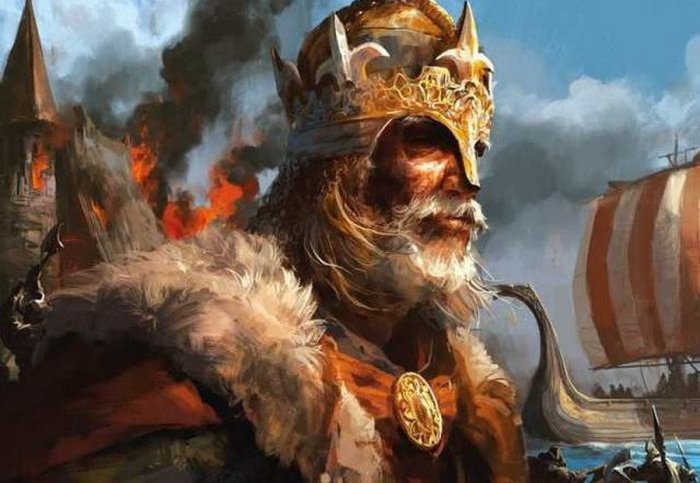As in any society, the Viking kings were rightfully considered the most powerful people around. Having the highest social status, however, was also associated with responsibilities and certain requirements, certain qualities and specially the right attitude as a leader.
It’s important to keep in mind that during the early Viking Age there were no Viking kings. The Viking society was divided into three social classes - the nobles or Jarls, the middle class or Karls and the slaves or Thralls. Although the different social layers within the population were perceived as ordained by the Norse gods, it was still possible for one person to move himself from one class to another.
Vikings kings appeared in the beginning of the Viking Age but they were only regional leaders. The most powerful individual Viking kings who ruled over most of the Scandinavian lands appeared at the end of the Viking Age.

Just like in the rest of Europe, the title of a king could be inherited, but for the Viking there was also the possibility of a man to become king if he had good reputation and prominent supporters, or was the leader of a successful military force. Some were considered better qualified as leaders than others. High intelligence and capacity for strategic thinking mere basic requirements.
A Viking king was expected to be ruthless toward his enemies, with no room for softness, an attitude that was to be displayed at all the times. The king’s physical appearance was also extremely important in viking society. Not only an imposing figure would be more respected, but the more lavishly dressed and adorned the king, the more powerful he would be considered, meaning that his lands were also considered more powerful and therefore more secure since his many rivals would avoid attacking a stronger opponent.
Surprisingly, amongst the many traits of a successful Viking King, generosity was arguably the main trait of a worthy leader. The king was obliged to distribute wealth in gifts and by other means, such as weapons, gold rings, clothes and sometimes ownership of land. This graciousness was much more focused on the king’s own household and its many, many members, hiding a much more practical meaning.

The members of the kings household, or hird in old norse, had a very important reason to be favoured: they were the king’s own bodyguards.
In the beginning of the Viking Age, a hird was like a war band, but around the time of the early Viking voyages, the term referred to a more unified group of bodyguards who traveled with their leader and protected him. A hird could be made up of 60 Viking warriors, handpicked from the best. Although any free man could theoretically assemble a hird, the truth is that only the most powerful chiefs and kings could afford the luxury of personal bodyguards, since no norse warrior fought for free, and quality has a price.

A Viking leader who had a hird must be able to pay his warriors in form of gifts such as gold and silver, clothes and weapons. In order to protect their leader around the clock, warriors also needed proper accommodation, food and drink. So, a Viking king had to be rich and generous, specially to those who risk life and limb for him.
That is not to say that a member of a hird was a simple mercenary. Far from it, the hird was similar to a brotherhood, and every single member considered each other as a brother and the king as a father.
A father that maintained his status because of his generosity.












